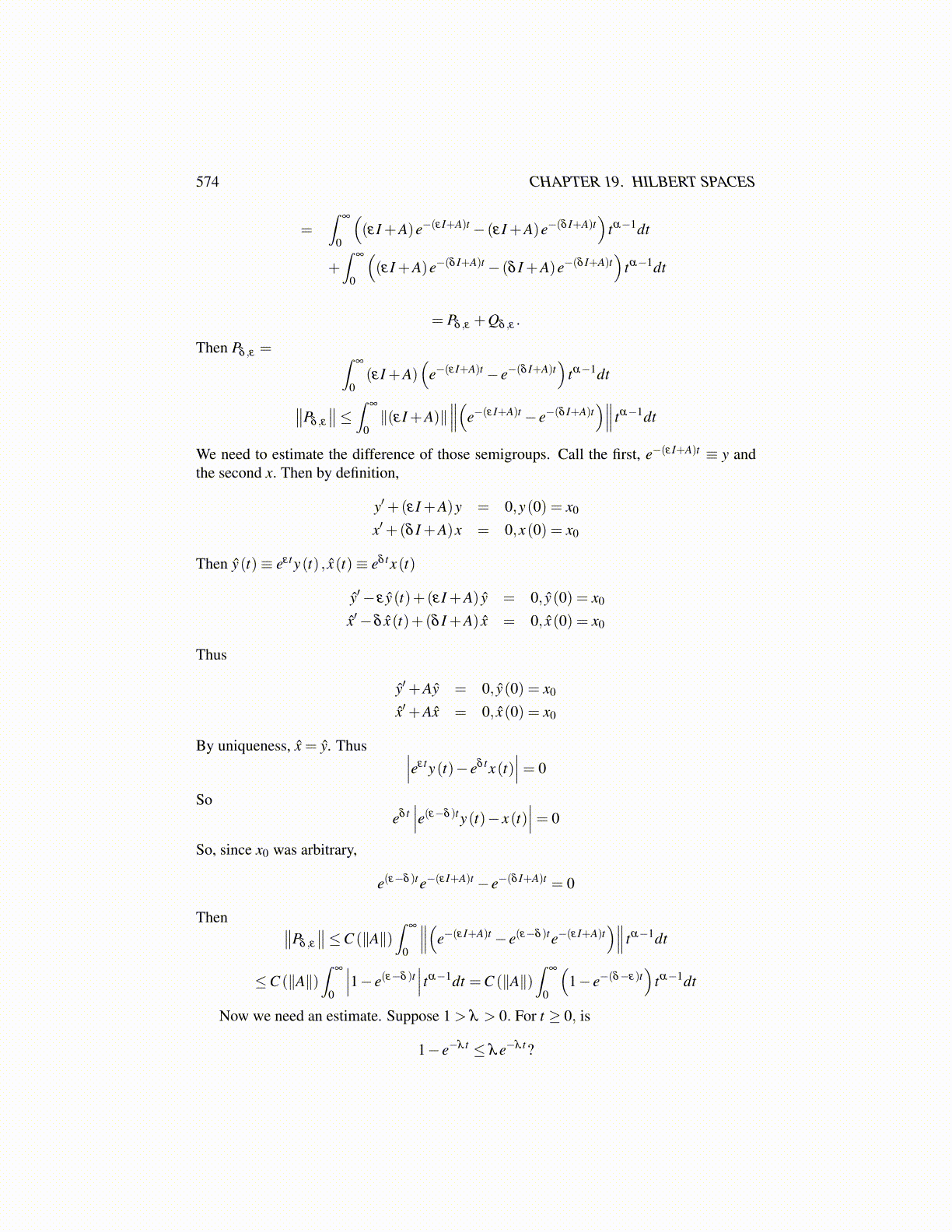
574 CHAPTER 19. HILBERT SPACES
=∫
∞
0
((εI +A)e−(εI+A)t − (εI +A)e−(δ I+A)t
)tα−1dt
+∫
∞
0
((εI +A)e−(δ I+A)t − (δ I +A)e−(δ I+A)t
)tα−1dt
= Pδ ,ε +Qδ ,ε .
Then Pδ ,ε = ∫∞
0(εI +A)
(e−(εI+A)t − e−(δ I+A)t
)tα−1dt
∥∥Pδ ,ε
∥∥≤ ∫ ∞
0∥(εI +A)∥
∥∥∥(e−(εI+A)t − e−(δ I+A)t)∥∥∥ tα−1dt
We need to estimate the difference of those semigroups. Call the first, e−(εI+A)t ≡ y andthe second x. Then by definition,
y′+(εI +A)y = 0,y(0) = x0
x′+(δ I +A)x = 0,x(0) = x0
Then ŷ(t)≡ eεty(t) , x̂(t)≡ eδ tx(t)
ŷ′− ε ŷ(t)+(εI +A) ŷ = 0, ŷ(0) = x0
x̂′−δ x̂(t)+(δ I +A) x̂ = 0, x̂(0) = x0
Thus
ŷ′+Aŷ = 0, ŷ(0) = x0
x̂′+Ax̂ = 0, x̂(0) = x0
By uniqueness, x̂ = ŷ. Thus ∣∣∣eεty(t)− eδ tx(t)∣∣∣= 0
Soeδ t∣∣∣e(ε−δ )ty(t)− x(t)
∣∣∣= 0
So, since x0 was arbitrary,
e(ε−δ )te−(εI+A)t − e−(δ I+A)t = 0
Then ∥∥Pδ ,ε
∥∥≤C (∥A∥)∫
∞
0
∥∥∥(e−(εI+A)t − e(ε−δ )te−(εI+A)t)∥∥∥ tα−1dt
≤C (∥A∥)∫
∞
0
∣∣∣1− e(ε−δ )t∣∣∣ tα−1dt =C (∥A∥)
∫∞
0
(1− e−(δ−ε)t
)tα−1dt
Now we need an estimate. Suppose 1 > λ > 0. For t ≥ 0, is
1− e−λ t ≤ λe−λ t?